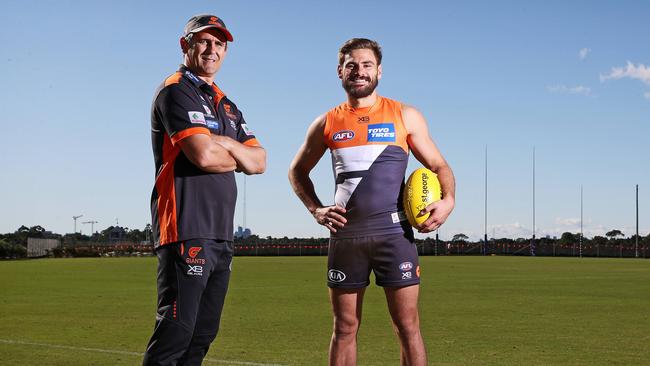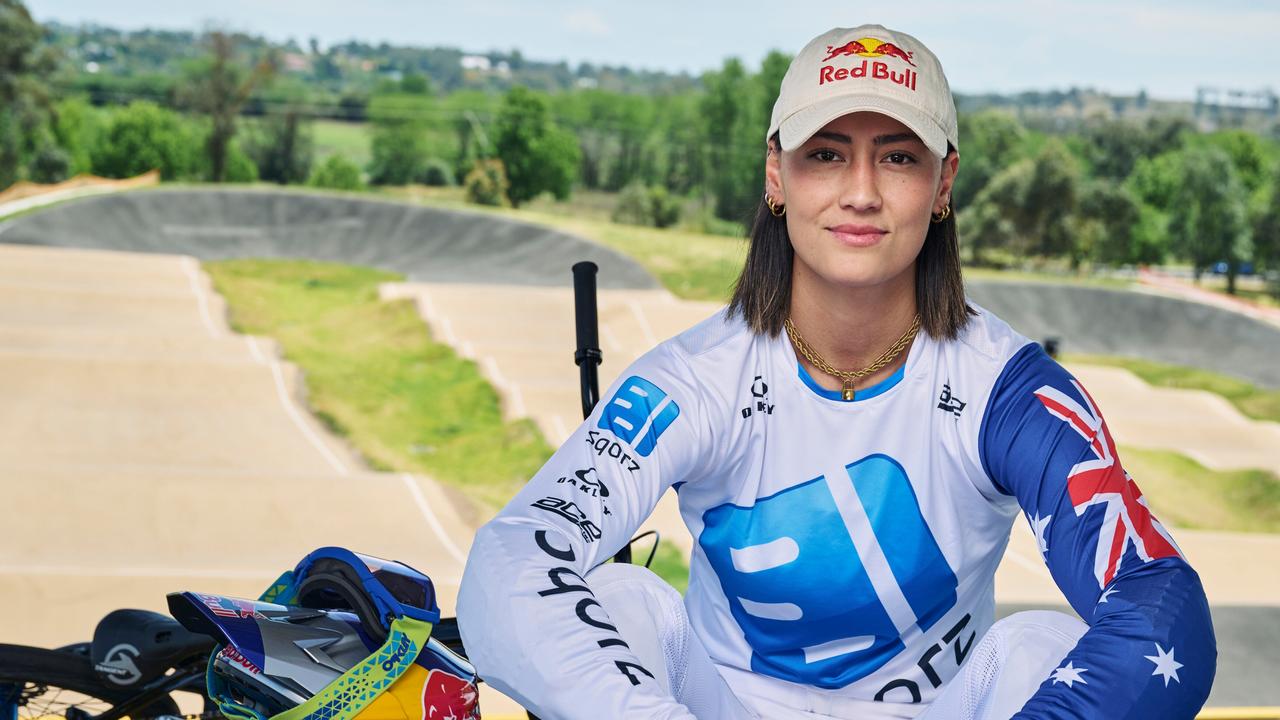Sydney and GWS were fighting for their very existence after coronavirus shutdown
How close did the coronavirus send Sydney’s AFL club to the brink? It was frightening. Ben Horne details the Swans and Giants’ fight for survival and how near they went to going under.

Sport
Don't miss out on the headlines from Sport. Followed categories will be added to My News.
Above water Sydney might have maintained all the grace of a Swan, but under it they were paddling furiously for their very lives.
The Sunday Telegraph can reveal one of the strongest clubs in Australian sport faced the prospect of insolvency at the onset of the COVID-19 pandemic unless urgent action was taken.
It was a secret fight for survival that defines the ruthlessness of a financial crisis which has caused billions of dollars of damage across all codes.
Coming into 2020, the Sydney Swans were in the best financial position in the proud club’s 146-year history.
Yet less than 48 hours after an undermanned outfit rallied for a famous round one victory over Adelaide, club bosses were racing the clock in a financial emergency as genuine as when flamboyant former owner Geoffrey Edelsten left the Swans on the brink of bankruptcy in the early 1990s.
“There were real concerns,” Swans chairman Andrew Pridham said about the days that followed the indefinite postponement of the competition. Are we going to be able to survive this?
“It was serious and real and scary. We didn’t know where it was going to go.”
Get your footy fix on KAYO ahead of live matches returning soon. Watch classic battles from the 60s to today, docos, news and more. New to Kayo? Get your 14-day free trial & start streaming instantly >

Chief executive Tom Harley spoke to Pridham on the phone 10 times a day, bunkered in a war room at Swans headquarters from first light until late night, alongside COO Drew Arthurson, coach John Longmire and head of football Charlie Gardiner.
“Just phone call after phone call and none of it pleasant,” says Longmire, as Harley and Gardiner bore the brunt of telling dozens of staff members they were stood down with no certainty as to when or even if they would return.
Sydney were forced to immediately surrender their lease for a $65 million training and administration facility at Moore Park, and started burning through cash reserves they’d spent the past 20 years building.
Along with the pragmatism of the board, significant announcements ultimately saved them: A federal government package which protected board directors from any personal liability for trading while insolvent and a critical line of credit secured from the banks by the AFL.
“In effect it ensured our solvency,” says Harley.
Up until that point we had no assurance of our going concern. It was pretty hairy there for a couple of weeks. We were very much in survival mode.”

THE GIANT JOB OUT WEST
Across town the AFL’s youngest club, GWS Giants, were also discovering the new definition of backs to the wall.
“The club is very resilient. Built on confronting a lot of challenges,” says chief executive David Matthews.
“But nothing like this.”
The Giants’ smaller size has worked to its advantage in terms of financial survival.
Their position was assured the moment AFL Chairman Richard Goyder gave a definitive opening address at the first meeting of club heavyweights in the wake of the crisis.
“’We have 18 clubs going into this disaster, and we’re going to have 18 clubs coming out of it. That is it,’” recalls GWS chairman Tony Shepherd of Goyder’s call to arms.
But merely “coming out of it” was not going to cut it if the COVID disaster destroyed the milestone advancements the club had made in nine years of blood, sweat and tears in rugby league heartland.
“My starting point as the leader of an organisation was, ‘how do we protect what we’ve built as a club?’ ” says Matthews.
“How do we protect jobs? How do we protect our revenue base and continue to thrive? As a young club and as a start-up, we were less exposed on things like ticketing revenue than a number of the big clubs, and in some ways were better placed to weather the storm. But I think the Sydney market becomes more important to the AFL going forward now. You’ve got to recalibrate costs, but try not to back away from investments.”

THE V’LANDYS EFFECT
For years the AFL has feasted on the NRL’s bumbling incompetence and made ominous inroads into enemy territory. But now there’s a new sheriff in town.
The canonisation of Peter V’landys for the minor miracle he’s performed in getting rugby league back has been scorned inside the AFL’s gilded bubble in Victoria. But not by the heavyweights who are directly competing against him in the same city.
Respective club chairmen, Shepherd and Pridham, praise V’landys as “outstanding” and have urged the AFL not to slow its mission in NSW, despite the inevitable financial cutbacks that loom.
“I think if I was Peter V’landys I’d be hoping the AFL did (pause) because I think that would be very much to their benefit,” says Pridham.
“Rugby league are formidable opponents, they’re going to get their act together. The biggest issue for the AFL in NSW is facilities. We need more ovals.”
THE HUMAN TOLL
Swans coach John Longmire has been involved in football at the highest level for over 30 years and has never experienced anything tougher than the crushing human impact of the virus.
“It was tough on us but the people you’re telling and their families, they’re the ones that really felt it,” Longmire said.
“To not have an answer for the people you’re standing down, other than it’s just a number. That can be challenging to hear.”
Club legends Tadhg Kennelly and Stuart Maxfield are among those stood down and the stress hit home quite literally for Swans young gun Nick Blakey, whose father John is part of Sydney’s coaching staff.
“That was tough,” he says.
“Not knowing whether dad would even have a job when we go back to training was just a weird situation to be in.”

Over at GWS, a new reality suddenly hit for the competition high flyers.
“You go from being in this certain world, playing in a grand final nine months ago, and then suddenly … 80 per cent of our staff were stood down,” says Giants coach, Leon Cameron. “That wrenches at you, because you have great people who have families and wives and kids they have to feed and want to know, ‘what’s happening in a month’s time? What’s happening at the end of the year?’ There was so much stress.”
THE PLAYERS
Fresh from their round one win, Giants stars Stephen Coniglio, Heath Shaw and Toby Greene were kicking back to watch former teammate Jon Patton play his first match for Hawthorn on TV when phones started buzzing on Sunday afternoon.
“That’s where we were when the season got postponed,” says Coniglio, who then made a mad dash to the airport to get home to family in Perth before he would have been quarantined on Rottnest Island.
The roller-coaster of emotions took a while to sink in for GWS rookie Tom Green, who packed up his things and drove back to Canberra hours after sneaking in a debut that very nearly never happened.
Coach Cameron was powerless to do anything about the unavoidable fact some of his players dispersed around the country would not have access to the weights needed to stay AFL ready.
Sydney co-captain Luke Parker says there’s no escaping the fact players have been rocked by the unprecedented environment they now find themselves in.
“It just shows how quickly things can be taken away from you.”

WHAT NOW?
GWS are set to welcome spectators back to Giants Stadium for next week’s season restart. Sydney has launched a campaign called “Bloods 2020” aimed at extending a moniker historically sacred to the playing group, to convince members to stick solid in what will be the first year in more than a decade that the Swans finish the season in debt.
The fight is far from over but Parker sums up the belief on both sides of the Anzac Bridge, that the Swans and Giants will eventually thrive once more.
“My hope for next year is it will be one of the biggest years in football.”
Originally published as Sydney and GWS were fighting for their very existence after coronavirus shutdown


